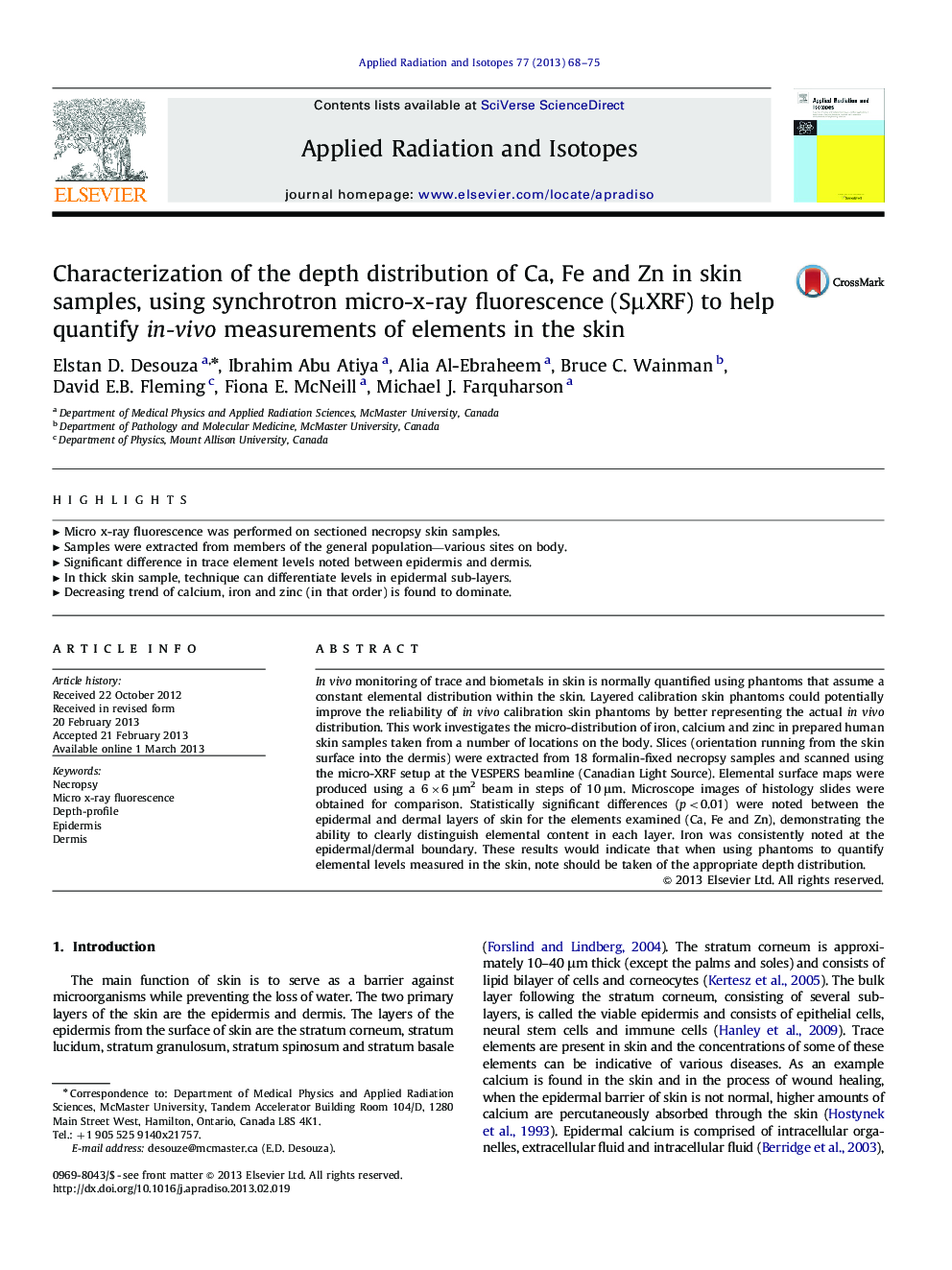| Article ID | Journal | Published Year | Pages | File Type |
|---|---|---|---|---|
| 1878853 | Applied Radiation and Isotopes | 2013 | 8 Pages |
In vivo monitoring of trace and biometals in skin is normally quantified using phantoms that assume a constant elemental distribution within the skin. Layered calibration skin phantoms could potentially improve the reliability of in vivo calibration skin phantoms by better representing the actual in vivo distribution. This work investigates the micro-distribution of iron, calcium and zinc in prepared human skin samples taken from a number of locations on the body. Slices (orientation running from the skin surface into the dermis) were extracted from 18 formalin-fixed necropsy samples and scanned using the micro-XRF setup at the VESPERS beamline (Canadian Light Source). Elemental surface maps were produced using a 6×6 μm2 beam in steps of 10 μm. Microscope images of histology slides were obtained for comparison. Statistically significant differences (p<0.01) were noted between the epidermal and dermal layers of skin for the elements examined (Ca, Fe and Zn), demonstrating the ability to clearly distinguish elemental content in each layer. Iron was consistently noted at the epidermal/dermal boundary. These results would indicate that when using phantoms to quantify elemental levels measured in the skin, note should be taken of the appropriate depth distribution.
► Micro x-ray fluorescence was performed on sectioned necropsy skin samples. ► Samples were extracted from members of the general population—various sites on body. ► Significant difference in trace element levels noted between epidermis and dermis. ► In thick skin sample, technique can differentiate levels in epidermal sub-layers. ► Decreasing trend of calcium, iron and zinc (in that order) is found to dominate.
